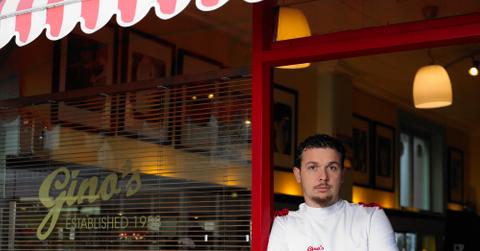Business Owners Don't Have to Pay Back PPP Loans If They Follow Terms of Forgiveness
PPP loans are forgivable, as long as you use the funding for the right reasons. Here are some reasons you might have to pay PPP loans back.
April 23 2021, Published 2:08 p.m. ET
The Small Business Administration (SBA) gave out $669 billion in 2020 and another $762 billion so far in 2021. But the Paycheck Protection Program (PPP) is not meant to be a stimulus check. It's reserved for company expenses, and following the terms ensures the PPP loans are forgiven.
Here's what it takes to get your PPP loan forgiven as a small business or a no-employee independent contractor — failure to comply could lead some to have to pay back their PPP loans.
Small businesses have specific terms to follow or they risk having to repay PPP loans
PPP loan forgiveness is definitely possible (unless you participated in a PPP loan scam, in which case you may soon be hearing from the U.S. Department of Justice). Each business is eligible for at least one draw. There's a maximum of two draws, but only certain businesses are eligible for the second based on how they use their first.
For the first draw, small businesses must maintain their employee and wage levels. Additionally, they must only spend the money on payroll and other eligible costs (such as rent or utilities). The business owner must allocate at least 60 percent of the loan to payroll costs.
If the business uses the first draw correctly, they can get the second draw. The same terms apply for forgiveness with the second draw.
Independent contractors have a bit more flexibility in PPP loan allocation
Because independent contractors and no-employee businesses don't have a staff, there's no payroll to speak of. Because of that, they have more leeway with how to use the funds. The rate for the independent contractor PPP loan is equal to the rate of the "owner's share" of the small business PPP loan. This means independent workers and sole proprietors can basically use the funds to pay themselves.
However, independent contractors are only eligible for their second draw if they showed a 25 percent decrease in income for at least two quarters year-over-year from 2019 to 2020. If a worker applies for and receives the second draw in bad faith, it won't be forgiven.
When should you apply for loan forgiveness?
Loan forgiveness is not automatic, though the application process is simple. The current round of PPP loans for independent contractors does not end until May 31, so the forgiveness process won't happen until the period ends.
You will have to contact your lender once they start accepting forgiveness applications. According to the SBA, "Your lender can provide you with either the SBA Form 3508, SBA Form 3508EZ, SBA Form 3508S, or a lender equivalent."
Be sure to collect your documentation—such as bank statements, tax forms, or payment receipts—so it's ready when you go to apply. Non-payroll expenses may need to be verified via lender amortizations (for mortgage payments), leases, or utility agreements.
Submit the form to your lender and wait for next steps. Be sure to complete any form that's asked of you regarding PPP loan forgiveness.


